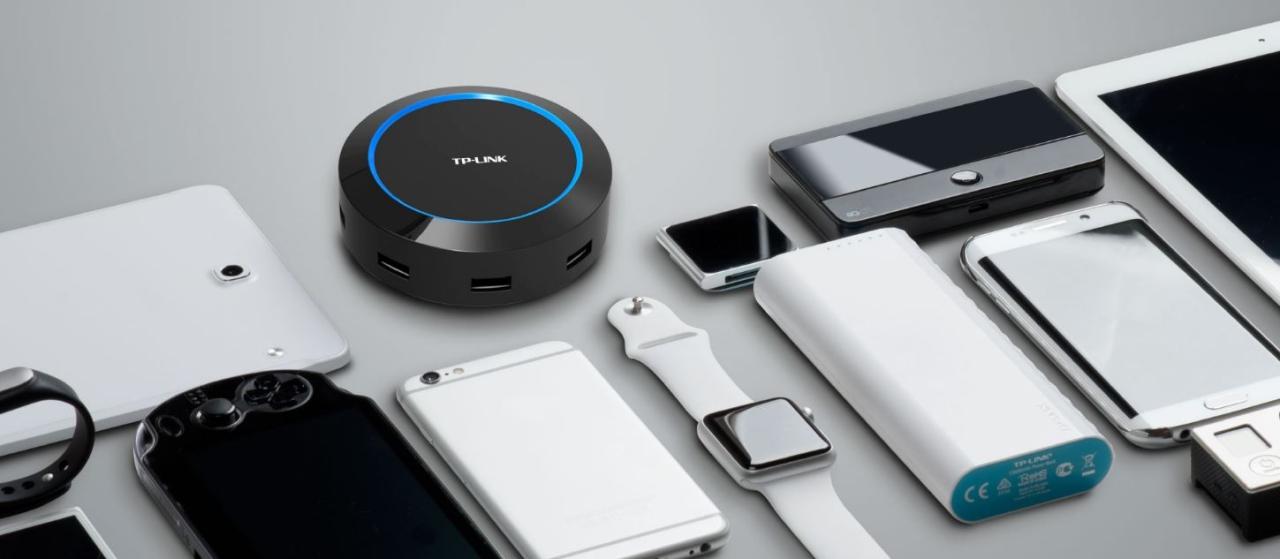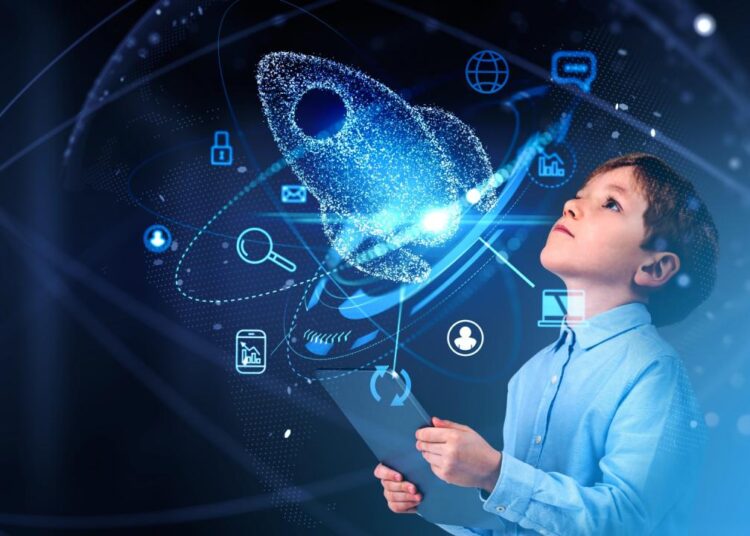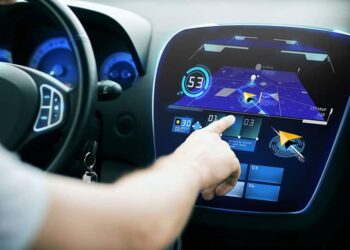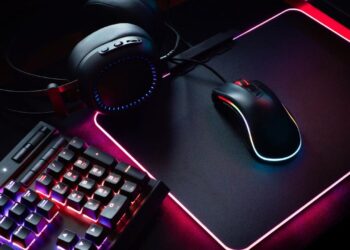In today’s hyper-connected world, personal tech has woven itself inextricably into the fabric of our daily lives. Far more than mere gadgets, these ingenious devices are the digital extensions of ourselves, continuously enhancing our productivity, entertainment, health, and social connections. This isn’t just about owning the latest smartphone; it’s about leveraging an ultimate guide to the integrated ecosystem of innovation that empowers us to navigate, create, and thrive in the modern era. From the intelligent assistants that manage our schedules to the wearables that monitor our well-being, this comprehensive exploration delves into the cutting-edge frontiers of personal technology, dissecting how these revolutionary devices are not merely providing convenience but actively redefining our interactions, personalizing our experiences, and pushing the boundaries of what’s possible. We’ll examine the intricate mechanisms behind these powerful tools, understanding their current impact, and their boundless potential to unlock previously unimagined possibilities for an increasingly digital future.
Smartphones and Connected Devices

The smartphone remains the undisputed cornerstone of personal tech, serving as the primary gateway to the digital world and the orchestrator of an ever-expanding array of connected devices.
A. Next-Generation Smartphones: More Than Just a Phone: Modern smartphones are miniature supercomputers, packing immense processing power, advanced cameras, and sophisticated sensors into a pocketable form factor.
* Advanced Processors (e.g., A-series, Snapdragon, Tensor): These chips leverage multi-core architectures, specialized AI engines (NPUs), and powerful GPUs to handle demanding tasks like real-time AI processing (for photography and voice assistants), high-fidelity gaming, and complex video editing, all while managing power efficiency for all-day battery life.
* Computational Photography: Beyond high megapixel counts, AI-driven computational photography transforms smartphone cameras. Features like Night Mode, Portrait Mode (with adjustable bokeh), HDR+, and advanced video stabilization process multiple frames instantly to create stunning images that often rival professional cameras, making high-quality photography accessible to everyone.
* Foldable and Flexible Displays: Innovations in display technology, particularly foldable and flexible screens, are redefining phone form factors. Devices like Samsung’s Galaxy Fold and Flip, or Google’s Pixel Fold, offer the versatility of a compact phone that unfolds into a larger tablet-like display, seamlessly adapting to different user needs for productivity and entertainment on the go.
* Enhanced Connectivity (5G, Wi-Fi 6E/7): Integrated 5G modems provide ultra-fast cellular speeds and low latency, crucial for cloud gaming, high-definition streaming, and real-time communication. Wi-Fi 6E and the upcoming Wi-Fi 7 further enhance local wireless performance, ensuring robust connectivity for bandwidth-intensive applications in congested environments.
These innovations ensure the smartphone remains the central, indispensable hub for personal digital life, offering unparalleled versatility and processing power.
B. Smartwatches and Wearable Companions: Smartwatches have evolved into sophisticated personal health and productivity companions, extending smartphone functionality to your wrist.
* Comprehensive Health Monitoring: Beyond step counting, modern smartwatches integrate advanced sensors for continuous heart rate tracking, ECG (Electrocardiogram) to detect irregular heart rhythms, SpO2 (Blood Oxygen Saturation) monitoring, and skin temperature sensing for sleep and cycle tracking. Some are even exploring non-invasive blood glucose monitoring.
* Fitness and Performance Tracking: GPS for accurate run/ride tracking, advanced calorie expenditure calculations, workout detection, and recovery metrics help users optimize their fitness routines and provide personalized coaching insights.
* Communication and Productivity: Seamlessly receive notifications, make calls, respond to messages via voice or text input, and manage contactless payments directly from your wrist. Built-in voice assistants provide instant access to information and control over smart home devices.
* Safety Features: Many smartwatches include fall detection and Emergency SOS features that can automatically alert emergency services or designated contacts in case of an accident or distress, offering a crucial layer of personal safety.
C. Wireless Earbuds and Immersive Audio: True wireless earbuds (like Apple AirPods, Samsung Galaxy Buds, Sony WF-1000XM5) have become ubiquitous, offering unparalleled convenience and increasingly sophisticated audio experiences.
* Active Noise Cancellation (ANC) and Transparency Mode: ANC technology effectively blocks out ambient noise for focused listening or immersive audio experiences, while Transparency Mode allows users to hear their surroundings without removing the earbuds, crucial for safety or conversation.
* Spatial Audio and Immersive Sound: Advanced processing creates spatial audio, providing a three-dimensional soundstage where audio appears to come from all around you, enhancing immersion for music, movies, and gaming.
* Advanced Microphones for Calls: Multiple microphones with AI-powered noise reduction ensure crystal-clear call quality even in windy or noisy environments, making them essential tools for remote work and communication on the go.
Smart Living and Personal Automation
Personal tech seamlessly extends into our living spaces, transforming homes into intelligent, responsive environments that anticipate our needs and automate mundane tasks.
A. Smart Home Hubs and Voice Control: Smart home hubs (e.g., Amazon Echo, Google Nest Hub, Apple HomePod) serve as central command centers for interconnected devices. They integrate voice assistants, allowing users to control lights, thermostats, security systems, and entertainment with simple verbal commands. These hubs learn user routines and preferences, enabling complex automations (e.g., “Good Morning” routine that adjusts lighting, temperature, and plays news). Compatibility with various communication protocols (Wi-Fi, Bluetooth, Zigbee, Z-Wave, Thread) ensures seamless interoperability across different brands.
B. Intelligent Lighting and Climate Control: Smart lighting systems offer wireless control over brightness, color temperature, and ambiance via apps or voice. They can be scheduled, triggered by motion, or dynamically adjust based on time of day, saving energy. Smart thermostats (e.g., Nest, Ecobee) learn occupancy patterns, integrate with local weather data, and optimize heating and cooling schedules for maximum energy efficiency and personalized comfort, often reducing utility bills significantly.
C. Smart Security and Monitoring Devices: Enhance home safety with wirelessly connected security devices. Smart cameras with AI-powered person detection, facial recognition, and two-way audio provide real-time monitoring and alerts. Video doorbells allow you to see and speak to visitors remotely. Smart locks offer keyless entry via smartphone, fingerprint, or voice command, with remote locking/unlocking and guest access management. Integrated with smart alarm systems, these devices provide comprehensive, proactive protection and peace of mind.
D. Automated Cleaning and Maintenance: The drudgery of household chores is significantly reduced by automated cleaning and maintenance devices. Robotic vacuum cleaners and mops, equipped with LiDAR navigation and AI, meticulously map and clean floors, avoiding obstacles and returning to their docks to self-empty. Robotic lawnmowers keep yards pristine, while smart irrigation systems optimize watering schedules based on local weather forecasts and soil conditions, conserving water and reducing effort. These devices free up valuable time for more enriching activities.
Productivity and Creativity

Personal tech provides powerful tools that augment our productivity, unleash our creativity, and enable new ways of learning and working.
A. High-Performance Laptops and Mobile Workstations: The core of modern productivity often lies in high-performance laptops and mobile workstations. Equipped with powerful multi-core processors (e.g., Intel Core Ultra, Apple M-series, AMD Ryzen), dedicated GPUs, and ample RAM, these devices handle demanding tasks like video editing, 3D rendering, complex software development, and intensive multitasking with ease. Their portability allows professionals, students, and creators to work efficiently from anywhere, turning any location into a productive workspace.
B. Tablets and 2-in-1 Devices: Tablets (e.g., iPad Pro, Samsung Galaxy Tab S series) and 2-in-1 convertible laptops (e.g., Microsoft Surface Pro) blend the portability of a tablet with the functionality of a laptop. Paired with active styluses (e.g., Apple Pencil, S Pen), they become powerful tools for digital art, note-taking, content consumption, and presentations, offering versatile input methods and adapting to various workflows.
C. Digital Pens and Graphics Tablets: For digital artists, designers, and note-takers, digital pens and graphics tablets (e.g., Wacom Cintiq, Apple Pencil for iPad) offer unparalleled precision and naturalistic input. Pressure sensitivity, tilt recognition, and low latency replicate the feel of traditional drawing and writing, translating hand movements directly into digital strokes. These instruments enable intricate digital painting, precise illustration, and intuitive annotation, empowering creative expression and enhancing digital workflows.
D. Portable Monitors and Ergonomic Accessories: To enhance productivity on the go, portable monitors offer a secondary display that connects via USB-C, extending screen real estate for multitasking. Complementing these are a range of ergonomic accessories like compact mechanical keyboards, precision mice, and portable stands that elevate laptops, reducing strain and improving comfort during extended work sessions in various locations, transforming any temporary setup into a more ergonomic workstation.
E. AI-Powered Productivity Software: AI is increasingly integrated into productivity software. AI writing assistants (e.g., Grammarly, Jasper AI) improve grammar, style, and even generate content. AI-powered transcription services convert speech to text with high accuracy, streamlining meeting notes and content creation. Smart scheduling tools leverage AI to optimize calendars and suggest meeting times. These tools automate tedious tasks, enhance efficiency, and allow users to focus on higher-value cognitive work, acting as intelligent co-pilots for daily tasks.
Entertainment and Lifestyle
Personal tech transforms how we consume entertainment, pursue hobbies, and connect with our passions, offering immersive and personalized experiences.
A. Gaming Consoles (Next-Gen) and Cloud Gaming: Next-generation gaming consoles (e.g., PlayStation 5, Xbox Series X) deliver stunning 4K graphics, ultra-fast load times with SSDs, and immersive haptic feedback in controllers, pushing the boundaries of interactive entertainment. Complementing this, cloud gaming services (e.g., Xbox Game Pass Cloud Gaming, NVIDIA GeForce NOW) allow users to stream high-end games to various devices (smartphones, tablets, smart TVs) without requiring powerful local hardware, making gaming more accessible and flexible, turning any screen into a gaming platform.
B. Smart TVs and Streaming Devices: Smart TVs are the central entertainment hub, offering integrated streaming apps, voice control, and seamless integration with other smart home devices. For older TVs, dedicated streaming devices (e.g., Apple TV, Roku, Amazon Fire TV, Google Chromecast) instantly upgrade them with smart capabilities, providing access to vast libraries of movies, TV shows, and music. Advanced models support 4K HDR, Dolby Vision, and Spatial Audio, delivering cinematic visual and audio experiences at home.
C. Immersive Virtual Reality (VR) Headsets: VR headsets (e.g., Meta Quest 3, PlayStation VR2, Apple Vision Pro) are transitioning from niche gaming devices to versatile immersive computing platforms. High-resolution displays, inside-out tracking, and advanced haptics create a powerful sense of presence for gaming, virtual tourism, remote social interaction, and virtual fitness. These devices offer a gateway to fully immersive digital worlds, blurring the lines between physical and virtual experiences and creating new forms of entertainment and social connection.
D. Drones and Action Cameras: For capturing stunning visuals from unique perspectives, drones (e.g., DJI Mavic series) and action cameras (e.g., GoPro, Insta360) are indispensable. Drones with stabilized gimbals and high-resolution cameras capture breathtaking aerial footage and photos. Action cameras, renowned for their ruggedness and wide-angle lenses, capture immersive point-of-view footage in extreme conditions. Both categories feature advanced image stabilization, long battery life, and often seamless smartphone integration for editing and sharing content, empowering adventurers and content creators.
Health and Well-being
Personal tech is revolutionizing how we monitor, manage, and proactively improve our physical and mental health, shifting healthcare towards a more personalized and preventative model.
A. Continuous Health Monitoring Wearables: As covered under smartwatches and rings, these devices offer continuous tracking of vital signs like heart rate, blood oxygen, and skin temperature. They provide detailed insights into sleep quality, stress levels, and activity patterns. This data empowers individuals to understand their body’s trends, identify potential issues early, and make informed lifestyle choices, forming the foundation of a proactive health management strategy.
B. Smart Scales and Body Composition Analyzers: Smart scales go beyond basic weight measurement, analyzing body composition (body fat percentage, muscle mass, bone density) through bioelectrical impedance. They wirelessly sync data to apps, tracking trends over time and providing a more holistic view of fitness and health progress than weight alone, helping users set and achieve realistic body composition goals.
C. Connected Fitness Equipment and Virtual Coaching: Home fitness has been transformed by connected fitness equipment (e.g., Peloton bikes, Mirror interactive gyms, Tonal strength systems). These devices integrate with personal profiles, offer live and on-demand classes, and track performance metrics. Many include AI-powered virtual coaching that provides personalized feedback, adjusts workouts based on progress and recovery data, and helps users achieve their fitness goals from the convenience of their home.
D. Mental Wellness Apps and Biofeedback Devices: Personal tech is increasingly supporting mental well-being. Mental wellness apps offer guided meditations, mindfulness exercises, cognitive behavioral therapy (CBT) techniques for managing stress, anxiety, and improving mood. Biofeedback devices (often integrated into wearables or standalone sensors) can monitor physiological responses like heart rate variability or skin conductance, providing real-time feedback to help users learn to control their stress responses, offering tangible tools for improving emotional regulation and resilience.
Connectivity, Ethics, and the Future
The rapid evolution and deep integration of personal tech bring about profound societal shifts, along with critical challenges that demand careful consideration and proactive management.
A. Ubiquitous Connectivity and the Digital Divide: The advancements in personal tech are driving towards ubiquitous connectivity, where devices are seamlessly linked, allowing for constant information flow. However, this also highlights the persistent digital divide, where access to devices, reliable internet, and digital literacy remains unequal globally. Ensuring equitable access to personal tech and digital skills is crucial to prevent further socioeconomic stratification and enable inclusive growth.
B. Data Privacy, Security, and Personal Data Ownership: The immense amount of personal data collected by smartphones, wearables, smart home devices, and apps raises paramount concerns about data privacy and cybersecurity. Protecting this sensitive information from breaches, misuse, and unauthorized access is critical. Robust encryption, secure data storage, transparent data governance policies, and empowering users with greater control over their own data are essential to build and maintain trust in personal tech ecosystems.
C. Ethical AI and Algorithmic Bias: Personal tech increasingly relies on AI for personalization, recommendations, and automation. This raises concerns about ethical AI and algorithmic bias. If AI models are trained on biased data or are not designed transparently, they can perpetuate and amplify societal inequalities, from biased search results to unfair credit scoring. Developing responsible AI, ensuring fairness, and allowing for human oversight in AI-driven personal tech are crucial.
D. Device Addiction and Digital Well-being: The pervasive nature of personal tech, with its constant notifications and endless content streams, can contribute to device addiction and impact digital well-being. Features designed to promote digital wellness (e.g., screen time limits, grayscale modes, focus modes) are emerging, but fostering mindful technology use and balancing screen time with real-world interactions remains a personal and societal challenge.
E. E-Waste and Sustainable Consumption: The rapid upgrade cycle of personal tech contributes significantly to electronic waste (e-waste), a growing environmental problem. Promoting sustainable consumption through designing devices for longevity, enabling repairability, facilitating easy recycling, and encouraging responsible disposal are critical for minimizing the ecological footprint of personal technology.
F. Augmentation and the Human-Machine Frontier: As personal tech becomes more integrated (e.g., BCIs, advanced prosthetics), it prompts profound questions about human augmentation and the future of the human-machine frontier. What are the ethical limits of enhancing human capabilities through technology? How do we define what it means to be human in an age of increasing technological integration? These philosophical and societal debates will continue to evolve as personal tech advances.
Conclusion
Personal Tech: Ultimate Guide to Innovation reveals a dynamic and ever-expanding ecosystem that is profoundly reshaping our lives. From the core power of our smartphones and the seamless intelligence of our homes to the empowering tools for productivity, creativity, and well-being, these innovations offer unparalleled opportunities for connection, efficiency, and personal growth. While navigating the complex ethical, privacy, and societal implications will be an ongoing journey, the immense potential for personalization, empowerment, and a more integrated, intelligent future, driven by this continuous stream of personal technological advancement, is truly boundless. The future of interaction is not just digital; it’s deeply personal, offering a truly unique experience for every user.













